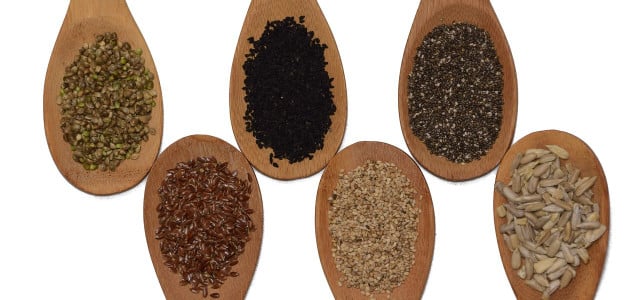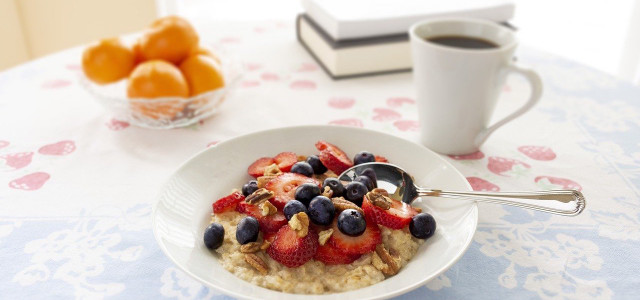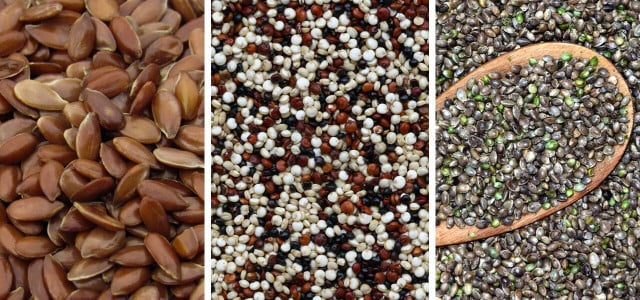Superfoods are more popular than ever. In this article, we'll take you through the benefits and differences between chia seeds vs. flax seeds and how to use them.
Though both seeds have been a staple part of a diet for thousands of years, they originated in two different parts of the world. Native to Mexico and Guatemala the chia seed was bestowed as “Food of the Gods” by the ancient Aztecs. Meanwhile, the flax seed, with its origins in the Middle East, was found to have been used in the human diet as early as 3000 BC in Babylon.
The chia seed is a tiny oval-shaped seed with a mild yet earthly taste that can come in a black, white, or brown color. Flax seeds on the other hand are larger and flatter with a slightly nutty flavor and can be bought whole or ground.
Chia Seeds vs. Flax Seeds

(Foto: CC0 / Pixabay / 4918394)
Chia Seeds
The chia seed is the small black seed from the Salvia hispanica plant, also known as salbei seeds, originating from Central and South America. Today the seed is primarily produced in Latin America and Australia.
High in heart-healthy omega-3s and soluble fiber, chia seeds may improve digestive health and omega-3 blood levels, alongside decreasing risk factors for heart disease and diabetes. They also provide good levels of iron, calcium, and all nine essential amino acids that cannot be made by the body.
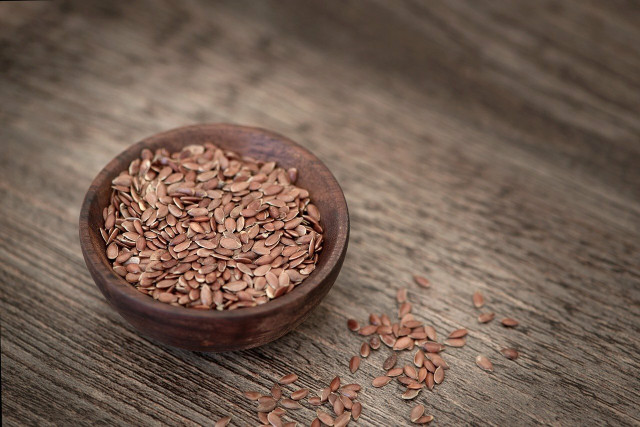


(Foto: CC0 / Pixabay / Pezibear)
Flax Seeds
Shaped more like pumpkin seeds and slightly bigger than the chia seed, the flax seed originates from the flax plant, also known as Linum usitatissimum, first cultivated in the Middle East. In fact, linen made from flax has been found in the tombs of Egyptian pharaohs. The plant itself has grayish-green leaves and sky-blue flowers, it can grow to about 2 ft tall.
Today, it is cultivated in many places, including Europe, South America, Asia, and parts of the United States. As well as being a nutrient-packed superfood, the seeds and oil are used medicinally and the oil is also found in polishes, varnishes, and paints.
Nutrition Facts of Chia and Flax Seeds
Both chia seeds and flax seeds are high in fiber, protein, and healthy fats with an extensive nutrient profile, including calcium, phosphorus, and manganese.
Easier to digest, chia seeds contain soluble fiber, which can help lower cholesterol levels. Flax seeds, however, unleash more of their health benefits when ground up – but they do pack in more omega-3 fatty acids per serving, reducing inflammation and preventing chronic disease.
Flax seeds also contain lignans that act as antioxidants and have been linked to protection against cancer and heart disease.
Is One of Them Healthier?
With a similar nutrition profile including high amounts of protein, fiber, and omega-3 acids, both seeds are referred to as healthy whole foods.
While both chia and flax seeds are awesome sources of fiber, chia provides about double that of flaxseeds. Chia seeds also provide a better source of calcium with 18 % of the Daily Value per two tablespoons.
Some prefer flax seeds as they are less expensive, and have a slight advantage when it comes to reducing hunger and appetite and protecting from certain cancers. But both would make a great addition to the diet.
How to Use Chia & Flax Seeds?
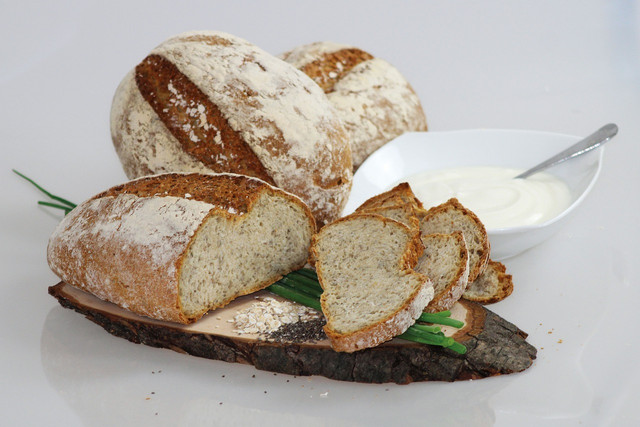


(Foto: CC0 / Pixabay / FAKTOR_1)
Both seeds are incredibly versatile and can make a great addition to smoothies, yogurt, oatmeal, or salads. They make a great nutritious ingredient in baked goods such as buckwheat bread and work as a perfect egg replacer in recipes.
The benefits for both chia and flax seeds are best reached when ground up and nutrients are longer retained when stored in the fridge.
Read on:
- What is Pea Protein? Here’s What You Need to Know
- Homemade Oat Milk: A Simple & Sustainable Recipe
- Raw Vegan Diet: Risks, Benefits, and Easy Recipes
Important Information regarding Health-related Topics.
** Links to retailers marked with ** or underlined orange are partially partner links: If you buy here, you actively support Utopia.org, because we will receive a small part of the sales proceeds. More info.Do you like this post?






